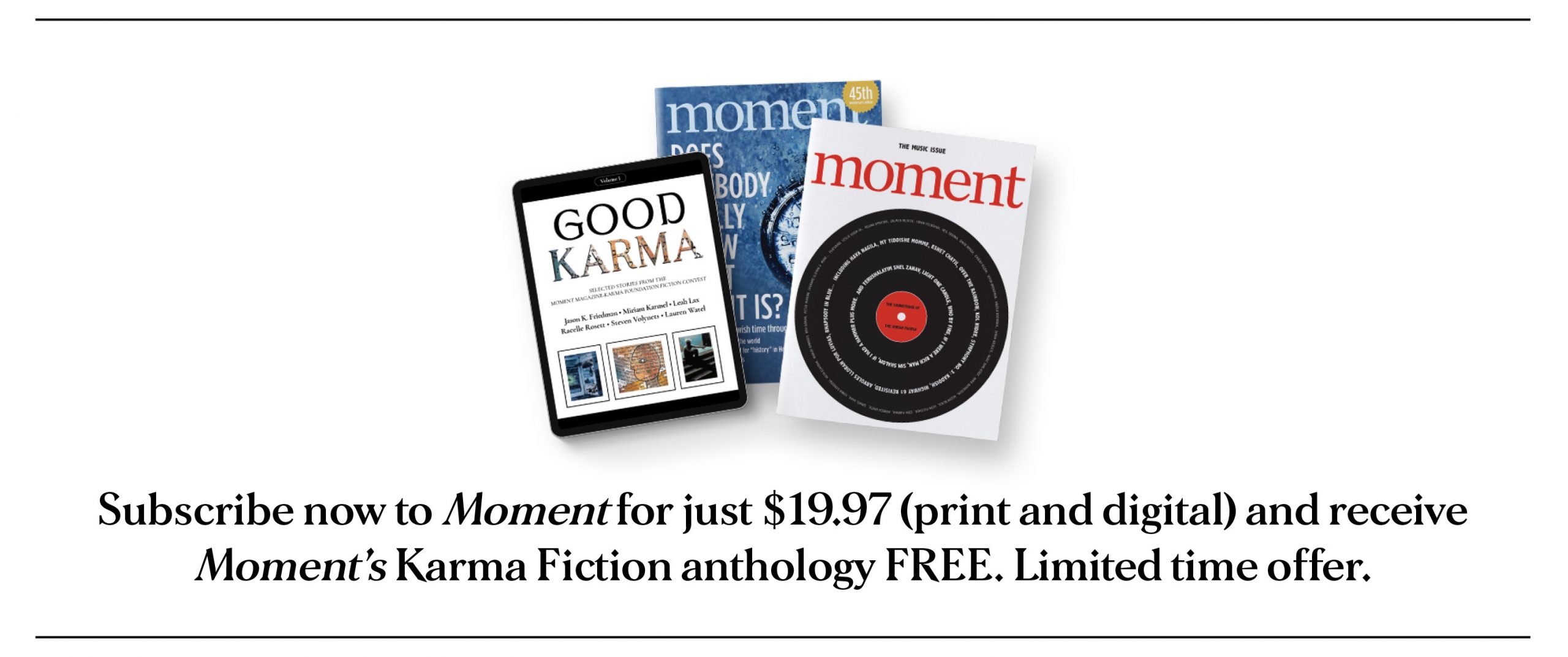
When I need a sweet, satisfying nibble, I often pick up a date. These wonderful little packages of luscious and nutritious fruit are boundlessly versatile. They pair with stews, sweets, meat and dairy. They transform into appetizers, entrées or desserts. They can be added to breads and puddings, infused into smoothies, made into honey or syrup, or used to liven up anything as a substitute for sugar.
Dates have a rich flavor, and an even richer history: Evidence found in Lower Mesopotamia, modern-day Iraq, confirms that dates are one of the world’s oldest cultivated fruits, domesticated over 6,000 years ago. The word “date” is derived from the Greek daktulos (“finger”), describing the way the oval-shaped dates dangle from their trees in hanging bunches. The Hebrew word for date is tamar, from the root meaning “to be lofty,” and for millennia slender date palm trees up to 75 feet tall have provided shade and nourishment from North Africa and the Middle East into India.
According to the Greek historian Strabo, the ancient Persians sang of 360 uses for the date palm. Wine made from tapping the palms quenched travelers’ thirst at ancient desert oases. Twigs and fibers were woven into baskets, sieves, mats and ropes, while tree trunks provided beams and other materials for building. The dates themselves were a daily staple, eaten plain or pressed into cakes along with figs. And because they were long-lasting, nourishing and easy to carry, they were favored by nomads, traders and explorers.
Dates also play a particularly important role in Jewish tradition. In the story of the biblical exodus, dates are one of the “seven species,” the fruits and grains the Israelites discover growing in the Promised Land. And when the Torah says the land is “flowing with milk and honey,” it is actually referring to date honey, not bee honey—which was rarer to find and dangerous to collect. This honey, called dvash temarim, is made by boiling dates for many hours, and it is mentioned in the Torah no fewer than 55 times.
Eventually dates made their way to Europe, growing especially well in Spain’s arid climate. In the 1700s, Spanish missionaries were the first to bring dates to the New World. But it wasn’t until the early 1900s that the commercial date industry began in the United States, when an intrepid explorer from the U.S. Department of Agriculture brought date cuttings from Iraq back to California.
Today, Southern California produces nearly 90 percent of all dates grown in the United States. Egypt, Saudi Arabia and Iran are typically the top producers worldwide, with the United States (and Israel) falling much lower on the list.
With grandparents from Turkey, I grew up munching on dates for their sweetness, unaware of their health benefits. Dates are considered a superfood, packing in critical vitamins and nutrients, as well as helping to regulate the digestive system, blood sugar and cholesterol levels. When it comes to nutritional value, all dates are equal—which is surprising, considering there are more than 200 varieties, differing in color, shape and taste. Most common in the United States are medjool dates, good for snacking and stuffing, and deglet noor dates, good for pitting and chopping.
Dates can be eaten in three stages of ripeness. In the first stage, they are pale yellow and crisp like an apple. U.S. shoppers will usually find these fresh dates only in specialty Middle Eastern markets. In the second stage, dates are light brown, soft and exceptionally sweet—and also difficult to find in the United States. American markets usually sell dates only in their third stage: These dried dates have wrinkly, dark brown skin and last for 18 to 24 months unrefrigerated.
Date honey, dvash, popular in the Middle East for thousands of years, used to be hard to find in the United States—I would stock up during trips to Israel—but because of the swell of interest in Israeli food over the past decade or so, it can now easily be found in many shops and markets. Today, dvash is most commonly marketed as silan. Also known as date molasses or date syrup, silan has a texture similar to molasses, but it’s easier to drizzle. It has less sugar than honey and a deeper, more complex taste. Mixing equal parts with tahini produces a topping for toast that is overwhelmingly popular in Israel—and gaining on PB&J in the United States. Silan can be drizzled over ice cream or pancakes, stirred into sauces and salad dressings, or used to sweeten tea and soothe sore throats. Mixed with olive oil, salt and pepper, it becomes a tasty glaze for roasted veggies, fish and fowl.
When the Torah says the land is ‘flowing with milk and honey,’ it is actually referring to date honey.
Dates are a staple of Sephardic, North African and Middle Eastern cuisines. Many Moroccan and Persian stews and tagines with chicken, beef and lamb feature dates, while dafina, the Moroccan long-cooked Shabbat stew, is served with dates as an ingredient or garnish. Certain recipes for Persian rice, a feature of some Shabbat dinners, call for dates and pistachios, along with other dried fruits. And when it comes to sweets, there are seemingly endless uses. Stella Hanan Cohen, a descendant of Sephardic Jews from Rhodes and author of Stella’s Sephardic Table, loves to make Rhodian Jewish shortbread “stuffed with succulent dates and chopped almonds, fragrant with cloves, cinnamon and orange blossom water,” she says. “We call them menenas, much like the cookies in the East Mediterranean known as ma’moul.”

Dried dates, fresh dates.
Served on their own, dates are traditionally stuffed with almond paste, almonds or walnuts. The Persian cake ranginak uses walnut-stuffed dates covered with a sweet roux and a layer of chopped pistachios. I often serve dates stuffed with creamy goat cheese or whipped feta with a sprinkling of chopped nuts or sesame seeds, pomegranate seeds and a drizzle of silan.
Dates continue to hold an important place in Jewish tradition—particularly when it comes to the holidays. They are one of the foods celebrated during Tu B’Shevat, and a key component of the Sephardic Rosh Hashanah seder. Traditionally, they symbolize the hope that our enemies will not harm us—or these days, the hope of finding love in the new year.
Dates and date syrup are also a leading ingredient in Passover charoset: Iraqi charoset, for example, is simply chopped nuts stirred into silan. Some Turkish charosets feature dates and oranges ground together raw or cooked into a paste. Each Passover, I make several charosets, but for more than 20 years, the crowd favorite has been my Moroccan charoset balls. Every family has its own way to prepare this special treat. Mine is mostly dates ground in the food processor together with dried figs, apricots and walnuts or almonds, then formed into small balls that I roll in finely chopped almond meal.
One of my favorite memories connected to those date-laden charoset balls is preparing them (along with other Sephardic foods) as the guest chef for White House seders with President Obama in the last few years of his term. When I make them now, I think about that special honor for this granddaughter of immigrants. I think about the date-and-orange charoset of my Sephardic ancestors in the Ottoman Empire, and about the pressed date-fig cakes of my biblical ancestors. Just as dates have sustained people for thousands of years, I am sustained by the connection to this rich heritage.
Back to the Moment’s Tu B’Shevat Resource Guide
TRIPLE DATE BREAD RECIPE
Recipe by Susan Barocas
Date-walnut bread came to the United States from the British Commonwealth and became popular in the first decades of the 20th century. Serve slices of this sweet bread as is or toasted, spread with butter or cream cheese. Up the taste with a drizzle of silan and sprinkling of chopped nuts. The recipe is dairy-free and can be made gluten-free by using one-to-one gluten-free flour.
INGREDIENTS
1 cup chopped dates, lightly packed, or 10-12 medjool dates
1 cup very hot water
1 teaspoon baking soda
1/4 teaspoon sea salt
1 1/2 cups all-purpose flour
1/2 cup date sugar (or granulated cane sugar if needed)
1 tablespoon vegetable oil
1/4 cup silan (date syrup)
1 large egg, beaten
1 cup coarsely chopped walnuts or pecans plus more for garnishing (optional)
INSTRUCTIONS
1. Preheat oven to 350 degrees. Lightly grease or spray with oil a standard loaf pan.
2. Measure the dates after they are chopped. If working with whole dates, pit them if needed. Cut in half lengthwise, then cut each half into three or four pieces. Pour the boiling water over the dates, baking soda and salt in a large heat-proof cup or bowl. Set aside to soften and cool while preparing the rest of the ingredients.
3. In a mixing bowl, blend the flour and sugar. Add in the remaining ingredients along with the date mixture and stir until well blended, being sure to incorporate all of the flour.
4. Pour into the prepared loaf pan, level the top and bake for about 45 minutes or until a toothpick comes out clean. Let cool in the pan for 10-15 minutes before taking out and letting cool on a wire rack.



One thought on “Talk of the Table | The Satisfying Sweetness of Dates”
I HAVE LOOKING FOR THIS RECIPE SINCE I TASTED MY GRANDMOTHER’S DATE NUT BREAD. THANK YOU VERY MUCH!